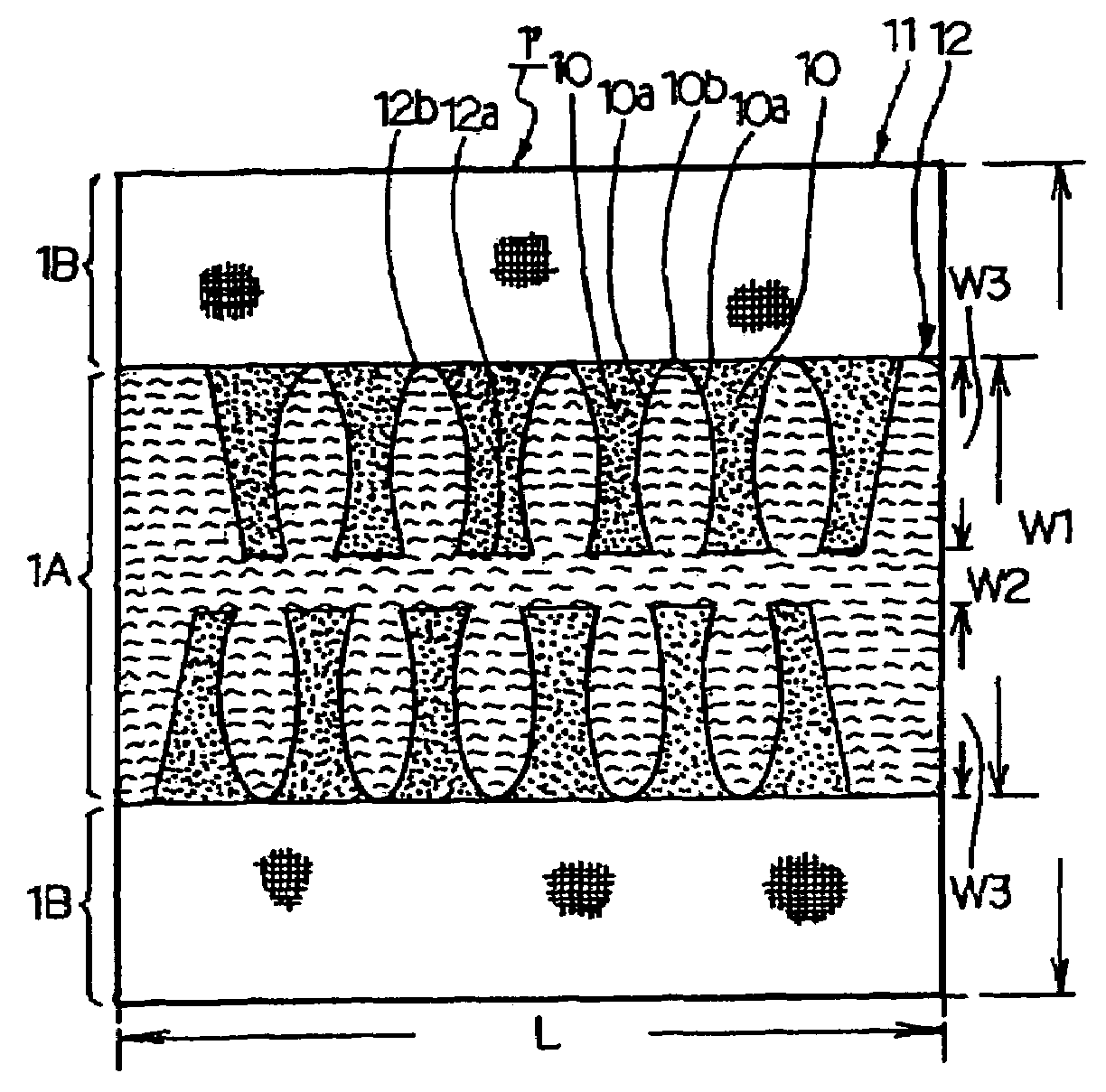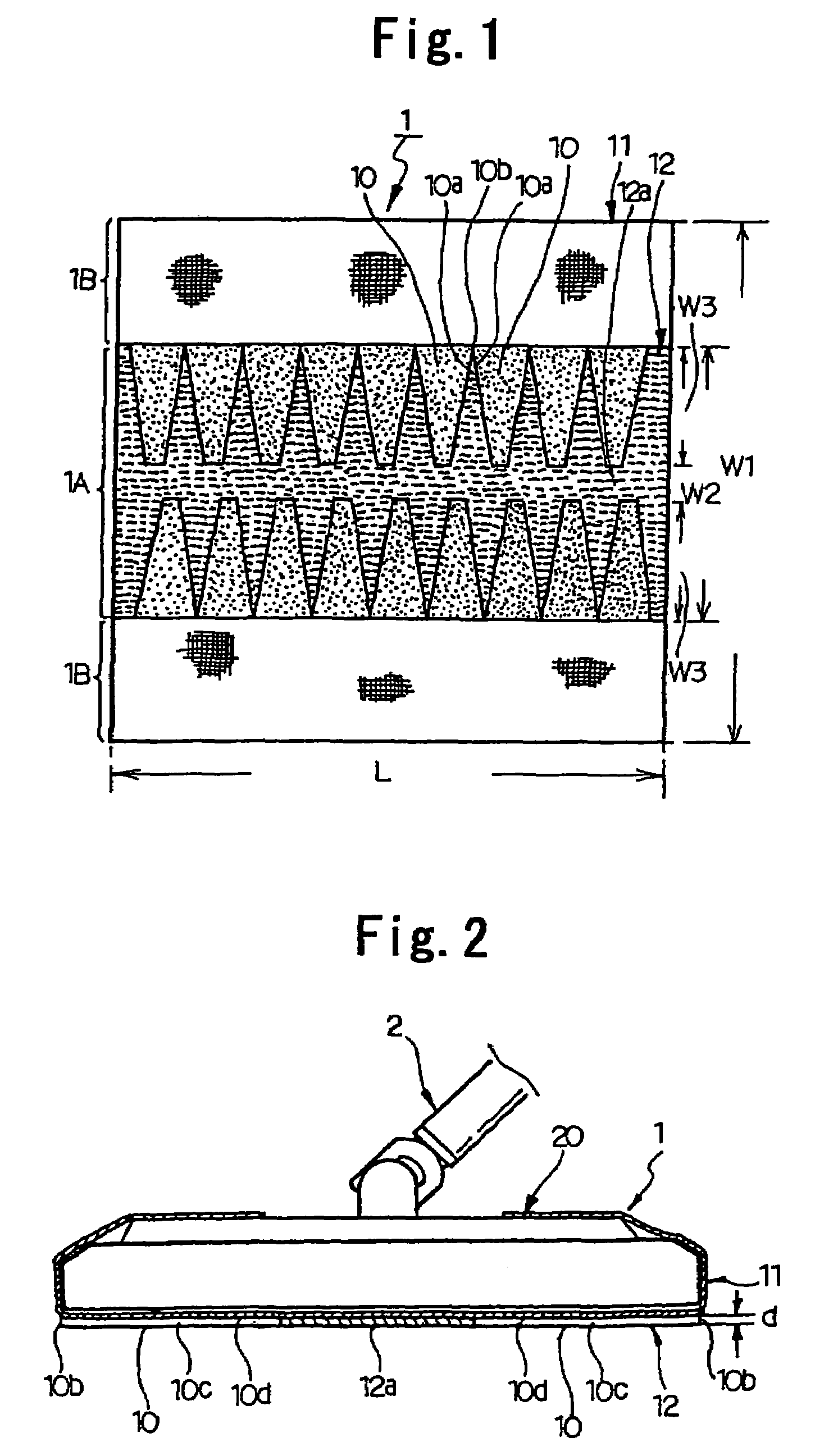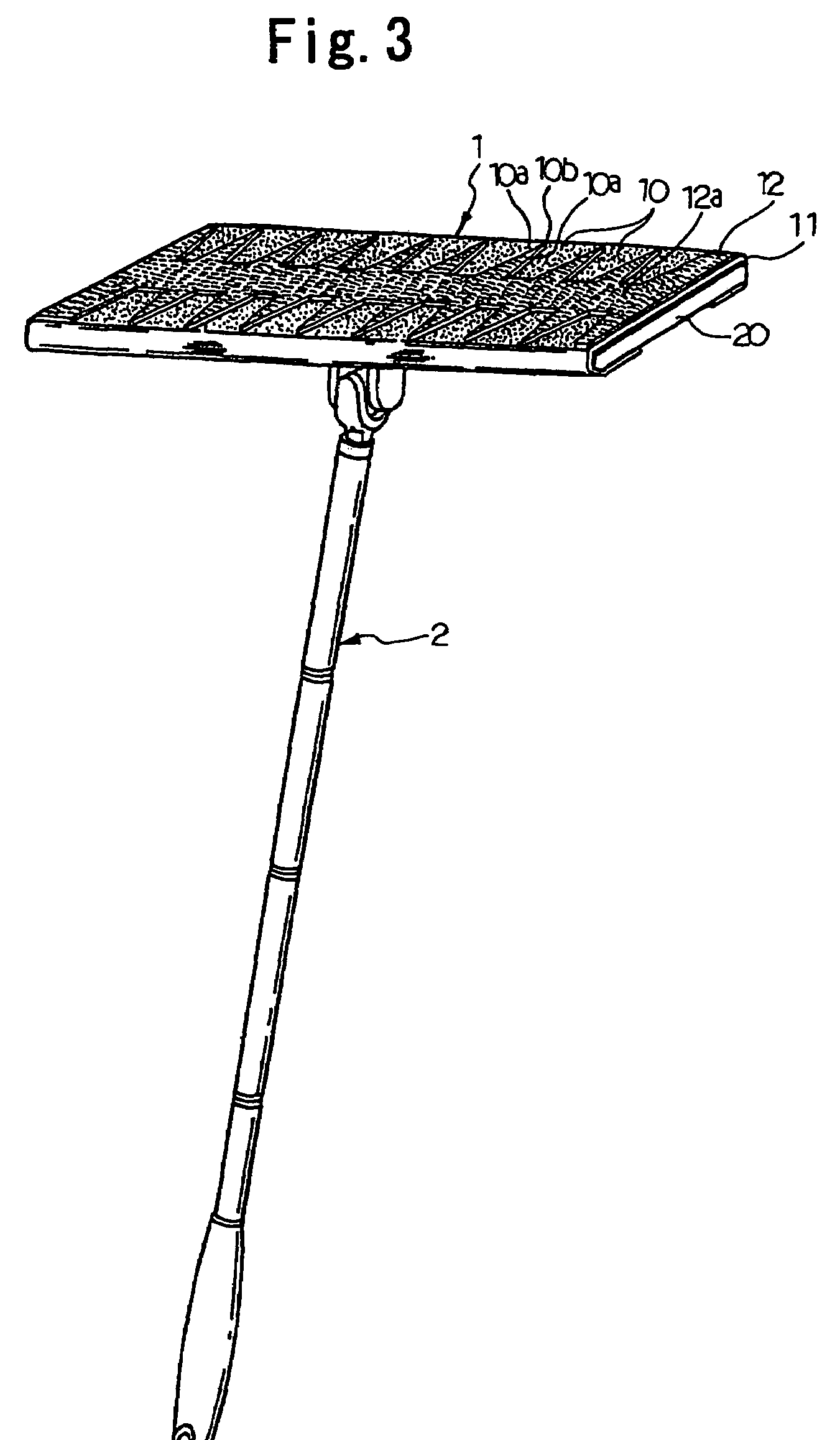Cleaning sheet
a technology of cleaning sheets and adhesives, applied in the field of disposable cleaning sheets, can solve the problems of entanglement and difficulty in removing large solid particles, debris may be trapped by sticky parts, and dust and debris may be difficult to remov
- Summary
- Abstract
- Description
- Claims
- Application Information
AI Technical Summary
Benefits of technology
Problems solved by technology
Method used
Image
Examples
first embodiment
[0041]FIGS. 1 to 3 illustrate the cleaning sheet according to the present invention. FIGS. 2 and 3 show the state of the cleaning sheet being attached to the head of a cleaning tool. In these figures, numerals 1 and 2 indicate the cleaning sheet and the cleaning tool, respectively.
[0042]As shown in FIG. 1, the cleaning sheet 1 has a rectangular shape in its plan view. The cleaning sheet 1 has a wiping portion 1A and fixing portions 1B located on both sides of the wiping portion 1A. In the state attached to the head 20 of the cleaning tool 2 as illustrated in FIGS. 2 and 3, the wiping portion 1A is disposed on the lower side of the head 20, and the fixing portions 1B are fixed to the upper side of the head 20.
[0043]While the cleaning sheet 1 is not particularly limited in size and shape, it is preferred that both length L and width W2 fall within ±30% of the length and the width, respectively, of the lower side of the head 20 of the cleaning tool 2. As the area of the head 20 of the ...
second embodiment
[0060]The cleaning sheet of the present invention can have the area of the recesses 10 increased by increasing the length W3 of the recesses 10 in the width direction of the wiping portion so as to have increased dust collecting capacity as in the cleaning sheet 1′ of the second embodiment shown in FIG. 4.
[0061]The wiping sheet 12 may have isosceles-triangular cutouts from its front and the rear edges in its plan, resulting in formation of isosceles-triangular recesses 10 in the plan view as in the cleaning sheet 1′ of the third embodiment shown in FIG. 5. The cleaning sheet 1′ of the third embodiment offers the following effect as well as the effects of the cleaning sheet 1 of the first embodiment. Because the recesses 10 taper toward the middle of the wiping portion 1A, dust is squeezed into the narrow depth of the recesses 10 near the middle of the wiping portion 1A.
[0062]The cleaning sheet 1′ of the third embodiment may have the area of the individual recesses 10 increased by na...
sixth embodiment
[0064]As in the cleaning sheet 1′ of the sixth embodiment shown in FIG. 8, the wiping sheet 12 may have no strip part 12a, and the recesses 10 of the front row may be interconnected to the recesses 10 of the rear row in such a configuration that the interconnected recesses 10 are impenetrable from the front or the rear. According to this design, the recesses 10 can have increased area, and relatively large dust particles can be collected even in the widthwise middle of the wiping portion 1A. Since the recesses 10 are impenetrable from the front or the rear, the dust once collected in the recess is not allowed to get through.
[0065]As in the cleaning sheet 1′ of the seventh embodiment illustrated in FIG. 9, the wiping part 1A may be designed such that there is no strip part 12a and that diamond-shaped (parallelogramic) pieces of the wiping sheet 12 are fixed on the base sheet 11 in a diamond lattice pattern instead of the comb tooth-like arrangement of the first embodiment. This arran...
PUM
| Property | Measurement | Unit |
|---|---|---|
| size | aaaaa | aaaaa |
| width W2 | aaaaa | aaaaa |
| width W2 | aaaaa | aaaaa |
Abstract
Description
Claims
Application Information
 Login to View More
Login to View More - R&D
- Intellectual Property
- Life Sciences
- Materials
- Tech Scout
- Unparalleled Data Quality
- Higher Quality Content
- 60% Fewer Hallucinations
Browse by: Latest US Patents, China's latest patents, Technical Efficacy Thesaurus, Application Domain, Technology Topic, Popular Technical Reports.
© 2025 PatSnap. All rights reserved.Legal|Privacy policy|Modern Slavery Act Transparency Statement|Sitemap|About US| Contact US: help@patsnap.com



